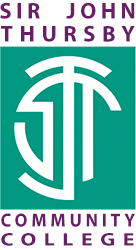Topic 2 year 7 physics
| Physics | |||
| Topic | Waves 1 | ||
| No of lessons | 10 | ||
| When is it happening | Term2 Year 7 | ||
| What will students learn |
Sound: Students need to be able to explain that sound is a vibration that travels as a longitudinal wave, it travels faster through denser materials. Louder sounds have a greater amplitude and higher pitch sounds have a greater frequency to their waveforms. The speed of sound is 330m/s and that it cannot travel though a vacuum. Explain how sound is reflected, transmitted or absorbed by different materials, being able to describe a wave and draw a wave with all the labels, use an oscilloscope, explain how we hear and how damage to particular parts of the ear can impair a persons hearing, be able to use drawings of waves to describe how sound waves change with volume and pitch. Definition of the terms; vibration, longitudinal wave, volume, pitch, amplitude, wavelength, frequency, vacuum, oscilloscope, absorption, auditory range and echo. Light: Students should be able to state how light can be absorbed and reflected when a light ray meets a different medium. Be able to draw ray diagrams and use a ray model to demonstrate that for a plane (flat) mirror, the angle of incidence is equal to the angle of reflection. Explain that the frequency of the light determines the colour and that the colours you see when you mixed different coloured light, or when objects are viewed in different light filters. Explain that when light enters a denser medium it bends towards the the normal and when it enters a less dense medium it bends away from the normal. Explain how light passes through lens and transparent materials and how to use ray diagrams to show refraction though a lens and prism. Explain how lense can correct vision. State the speed of light as 300 million metres per second in a vacuum. Predict whether light will reflect, refract or scatter when it hits a surface of a given material. Define the terms: incident ray, reflected ray, normal line, angle of incidence and reflection, refraction, absorption, scattering, transparent, translucent, opaque, Heliographs, convex lens, concave lens and retina. |
||
| Key Knowledge that students should know at the end of 'Topic' | This is the knowledge that students will meet for the first time in this topic | Draw and label a wave diagram. Identify a longitudinal and transverse wave. Use an oscilloscope. Label a diagram of the ear and explain how we hear. Explain how sound waves pass through different mediums. Be able to use a wave generating machine. Understand that different animals have different auditory ranges and what our range is. Explain how we can insulate against noise pollution. Are able to use a light ray box to draw a fully labelled light ray diagram for both reflective and transparent surfaces. Draw a diagram to show how refraction occurs through a glass block. Explain how convex and concave lenses work using a diagram. Label the key structures of the eye and state what their purpose is. Explain how different frequencies of light (colours) can be mixed to produce other colours and how we see colour | |
| This is knowledge that students may have met before but will need to deepen their understanding | Students should have basic knowledge of the different types of waves and how they are drawn and the different parts labelled. They should have basic knowledge of drawing ray diagrams for reflective and transparent surfaces and understanding of both how we hear and see. They also need to have basic knowledge of how both sound and light behave through different mediums including a vacuum and materials of differing densities. | ||
| Key Skills that students should be able to demonstrate at the end of 'Topic' | This is the skills that students will meet for the first time in this topic | Setting up and using light boxes to draw accurate ray diagrams for reflective and transparent surfaces. Use of Oscilloscopes and a sound generator. | |
| This is skills that students may have met before but will need to develop | Using lenses. Setting up and using a wave generating machine. | ||
| Key vocabulary that students should know and understand |
vibration, longitudinal wave, volume, pitch, amplitude, wavelength, frequency, vacuum, oscilloscope, absorption, auditory range, echo, incident ray, reflected ray, normal line, angle of incidence and reflection, refraction, absorption, scattering, transparent |
||
| The Big Question | What are waves and why are they important? | ||
|
Key questions that students should be able to answer at the end of the 'Topic' |
What is light? | ||
| How does light bounce off surfaces? | |||
| How does light travel through mediums? | |||
| What is colour? | |||
| How do we sense light and see? | |||
| What is sound? | |||
| How can we describe sound and sound waves? | |||
| How do we hear and what is your auditory range? | |||
